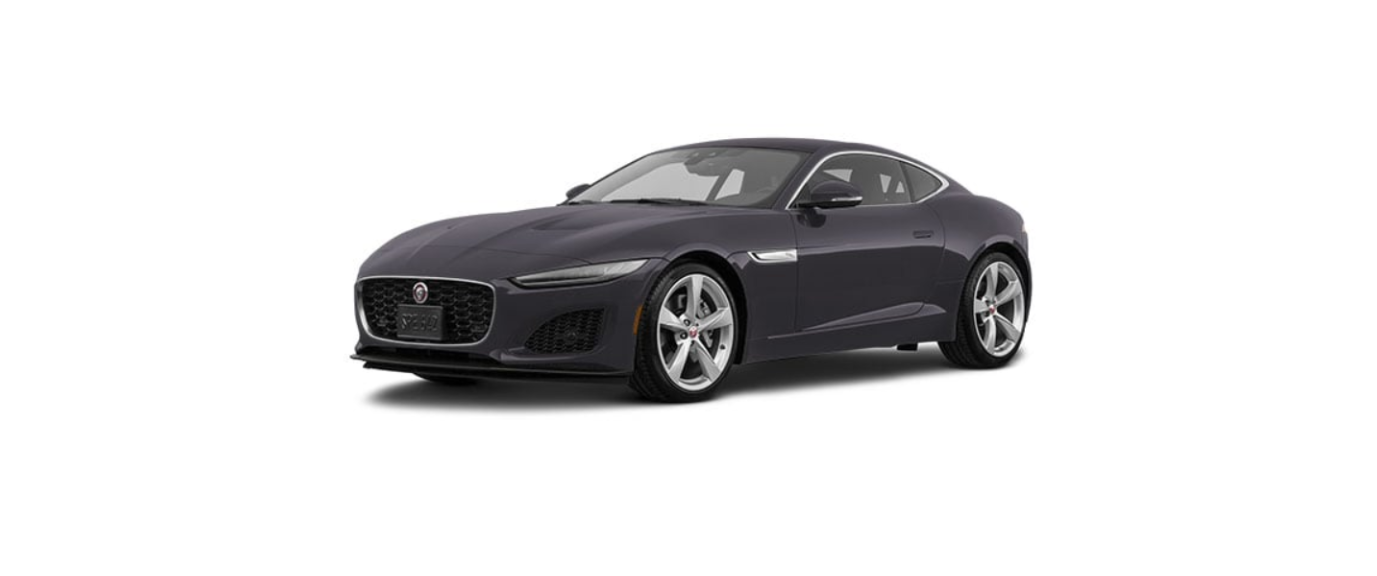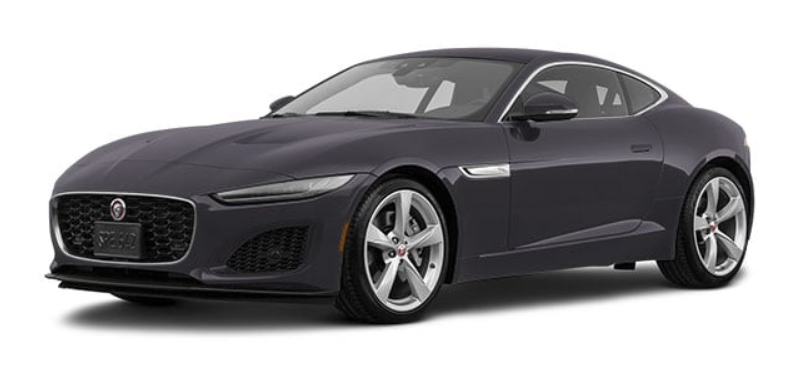2022 Jaguar F-TYPE Maintenance Owners Manual




2022 Jaguar F-TYPE Maintenance


PARTS AND ACCESSORIES
The vehicle is not designed for use with a roof rack. Do not fit a roof rack to the vehicle, as damage may result.
The fitting of non-approved parts and accessories, or the carrying out of non-approved alterations or conversions, may be dangerous. Doing so could affect the safety of the vehicle and occupants and also invalidate the terms and conditions of the vehicle warranty.
Jaguar Land Rover Limited will not accept any liability for death, personal injury, or damage to property, which may occur as a direct result of the fitment of non-approved accessories or the carrying out of non-approved conversions to the vehicle.
AIRBAG SYSTEM
Certain components of the vehicle, such as air bag modules and seat belt pre-tensioners, may contain perchlorate material. Special handling may apply for service or vehicle end-of-life disposal.
The components that make up the airbag system are sensitive to electrical or physical interference. Electrical or physical interference could easily damage the system and cause inadvertent operation or a malfunction of the airbag module.
To prevent malfunction of the airbag system, always consult a retailer/authorized repairer before fitting any of the following:
- Electronic equipment such as a cell phone, two-way radio, or sound system.
- Accessories are attached to the front of the vehicle.
- Any modification to the front of the vehicle.
- Any modification involving the removal or repair of any wiring or component in the vicinity of any of the airbag system components. The components include the steering wheel, steering column, and instrument and dashboard panels.
- Any modification to the dashboard panels or steering wheel.
AIR CONDITIONING (A/C)
With reference to US legislation relating to Air Conditioning (A/C) refrigerants, J2845 Technician Training for Safe Service and Containment of Refrigerants Used in Mobile Air Conditioning (A/C) Systems (HFO-1234yf) states that under no circumstances should any part of the A/C system be serviced, dismantled, or replaced by anyone other than suitably qualified and certified personnel. Make sure that the refrigerant is correctly contained at all times. Failure to adhere to the above may result in serious personal injury or death.
All replacement parts for the Air Conditioning (A/C) system must be new and equivalent to the manufacturer’s original equipment. All replacement parts must comply with the relevant SAE standard (J2842). Contact a retailer/authorized repairer for advice. Failure to do so may lead to serious personal injury or death.
The following symbols may be used on an under-hood label and are relevant to the refrigerant fluid:
A/C symbol.
Lubricant symbol.
Caution.
Flammable refrigerant.
Required registered technician to service A/C.
Consult the Owner’s Handbook.
BREAKING-IN
The vehicle is built using high-precision manufacturing methods, but the moving parts of the engine must still bed in relative to one another. The process occurs mainly in the first 2 000 miles (3 000 km) of operation.
During this breaking-in period of 2 000 miles (3 000 km):
- Avoid frequent cold starts followed by short-distance driving.
- Preferably take longer journeys.
- Do not fully press the accelerator pedal during starts and normal driving.
- Avoid continuous operation at high engine speeds and avoid abrupt stops.
- Do not participate in track days, sports driving schools, or similar.
In addition, specifically up to 3 000 miles (2 000 km):
- Drive at varying engine and road speeds. Do not exceed an engine speed of 4 500 rpm (revolutions per minute) and a road speed of 105 mph (170 km/h).
From 1 250 miles to 2 000 miles (2 000 km to 3 000 km):
- Engine and road speeds can be increased gradually.
- Engine speeds in excess of 5 000 rpm should only be used briefly, e.g., when overtaking.
At all times, not just during the breaking-in period:
- Do not exceed 4 000 rpm until the engine has reached its full operating temperature.
- Avoid laboring the engine by operating the engine in too high a gear at low speeds.
OWNER MAINTENANCE
Any significant or sudden drop in fluid levels, or uneven tire wear, should be reported to a qualified technician without delay. Failure to do so may damage the vehicle and lead to accidents, potentially resulting in serious injury or death.
The vehicle has a low curb and ramp clearance. Take care when approaching low curbs and steep ramps, as these may cause damage to the lower parts of the bumper. In addition to the routine services and inspections, a number of simple checks must be carried out more frequently. All maintenance checks can be carried out by the owner, and advice is given on the pages that follow.
DAILY CHECKS
- Operation of the lights, horn, turn signals, wipers, washers, and warning indicators.
- Operation of seat belts and brakes.
- Look for fluid deposits underneath the vehicle that might indicate a leak. Condensation drips from the Air Conditioning (A/C) system are normal.
WEEKLY CHECKS
- Engine oil level.
- Engine coolant check.
- Brake fluid level.
- Windshield washer fluid level.
- Tire pressures and condition.
- Operate the Air Conditioning (A/C) system.
The engine oil level should be checked more frequently if the vehicle is driven for prolonged periods at high speeds.
SAFETY WHEN CARRYING OUT VEHICLE CHECKS
Make sure the following warnings have been read and fully understood before carrying out vehicle checks. Failure to follow the guidance given could affect vehicle safety, leading to serious injury or death.
Vehicle repairs should only be carried out by a suitably qualified technician. Failure to have repairs carried out by a suitably qualified technician may result in vehicle damage, injury, or death.
If the vehicle has been driven recently, do not touch the engine, exhaust, or cooling system components until the engine has cooled. Skin contact with hot parts of the car could result in injury.
Never leave the engine running when the vehicle is in a garage. Exhaust gases are poisonous and can cause unconsciousness and death if inhaled.
Do not work beneath the vehicle with the wheel-changing jack as the only means of support. The jack is designed for wheel changing only. Always use correctly-rated vehicle support stands, before putting any part of the body beneath the vehicle. Climbing under a vehicle supported only by a jack may result in injury or death.
Keep hands and clothing away from drive belts, pulleys, and fans. Some fans may continue to operate after the engine has stopped. Contact with moving fans could result in vehicle damage and injury.
Remove metal wristbands and jewelry before working in the engine compartment. Metallic objects could cause a short circuit, leading to fire, injury or death.
Do not touch electrical leads or components while the engine is running, or with the ignition turned on. High voltage in the ignition system could cause injury or death.
Do not allow tools or metal parts of the vehicle to make contact with the battery leads or terminals. Metallic objects could cause a short circuit, leading to fire, injury or death.
FUEL SYSTEM
Under no circumstances should any part of the fuel system be dismantled or replaced by anyone other than a suitably qualified vehicle technician. If any parts are replaced by an unqualified person, it may cause interference in the operation of the vehicle, leading to serious injury or death.
Make sure sparks and open flames are kept away from the engine compartment. A spark may cause an explosion, which may lead to serious injuries or death.
Wear protective clothing, including, where possible, gloves made from an impervious material. Failure to do so may result in serious injury or death.
USED ENGINE OIL
Prolonged contact with engine oil may cause serious skin disorders, including dermatitis and cancer of the skin, potentially leading to death. Always wash thoroughly after contact.
OPENING THE HOOD
- Pull the hood release handle located in the left-side footwell.
- Reach across to the center rear edge of the hood and lift. The gas-filled struts assist with raising the hood and securing it in the fully open position.
CLOSING THE HOOD
Before closing the hood, make sure that no one is obstructing the closing area and that hands and clothes are clear. Failure to do so may lead to serious personal injury or death.
Do not drive with the hood secured by the safety catch alone. If the hood opens while driving, it may lead to a collision, which may cause serious injuries or death.
When closing the hood, make sure to stand in front of the vehicle. Do not attempt to close the hood while standing at the side of the vehicle. Doing so may result in incorrect latching of the hood. Incorrect latching may lead to an accident, as stated in the previous warning.
To close the hood:
- While standing in front of the vehicle, apply continuous, even pressure to both sides of the hood, in the positions shown. Lower the hood until it is securely latched on both sides.
- To check that both latches fully engage, attempt to lift both sides of the rear outer edge of the hood. The hood should be free from all movement.
If the hood fails to latch securely on either side, re-open the hood and repeat the above procedure. Continue the procedure until both sides of the hood are securely latched.
UNDER-HOOD COVERS REMOVAL
- Rotate the turnbuckle screws counter-clockwise, then pull to remove.
- Lift the front edge of the cover and slide forward to remove it.
UNDER-HOOD COVERS REFITTING
Before refitting the under-hood cover, make sure no pipes, cables, or other items have been trapped between the cover and the casing. Trapped parts may damage vehicle components.
To refit the covers:
- Place the cover over the casing and make sure to align the holes.
- Press the cover down firmly and push the turnbuckles through the cover and casing. Rotate the turnbuckle screws clockwise to tighten.
UNBLOCKING WASHER JETS
Do not operate the washer jets during adjustment. Windshield washer fluid may cause irritation to the eyes and skin. Always read and observe the washer fluid manufacturer’s instructions.
If a washer jet becomes blocked, insert a thin strand of wire into the washer jet to unblock it. Make sure that the wire is completely removed after unblocking.
CHANGING A BULB
All lights are LED units and must only be replaced by a retailer/authorized repairer.
WIPERS SERVICE POSITION
To avoid damage to the hood, do not lift the wiper blades when they are in the normal parked position.
The smart key must remain inside the vehicle while the wiper blades are replaced.
Before changing a wiper blade, the wiper arms must be set in the service position as follows:
- Make sure the ignition is switched off.
- Switch the ignition on, then off again.
- Immediately pull the wash/wipe control toward the driver, as if to command a single wipe. Hold this position while switching the ignition on again.
The wipers move to the service position. See WIPER OPERATION.
- When the new parts have been fitted, switch the ignition off. The wipers return to the park position.
Fit only replacement wiper blades that are identical to the original specification.
Replace the wiper blades in accordance with the manufacturer’s instructions.
WINDOW RESET
The windows need to be reset if the battery is disconnected, or becomes discharged, or if the power supply is interrupted.
Once the power supply is restored, reset the windows as follows:
- Close the window fully, and release the switch.
- Lift the switch to the close position, and hold for 2 seconds.
- Repeat this process a total of five times.
Test the window to check that the one-touch operation is working correctly. Repeat the process for the remaining windows.
Recent Posts
VW Jetta Engine Fuse Box Diagram
Access the comprehensive 2010-2018 VW Jetta Passenger Fuse Box Diagram to troubleshoot electrical issues effectively.…
VW Jetta Passenger Fuse Box Diagram
Explore the comprehensive VW Jetta Passenger Fuse Box Diagram to troubleshoot electrical issues effectively. Understand…
2023 Ford F-150 Lightning Fuse Box Diagram
Under Hood Fuse Box Location Remove the front luggage compartment cover. Under Hood Fuse Box…
2022 Kawasaki NINJA H2 SX SE Brake Lever Adjuster Owner’s Manual
2022 Kawasaki NINJA H2 SX SE Brake Lever Adjuster Owner's Manual NOTICE Only adjust the front…
2023 Land Rover Range Rover Evoque Exiting The Vehicle Owners Manual
2023 Land Rover Range Rover Evoque Exiting The Vehicle SINGLE LOCKING WARNING Before exiting the…
2023 Land Rover Range Rover Evoque Front Seats Owners Manual
2023 Land Rover Range Rover Evoque Front Seats FRONT SEAT SAFETY Make sure to read…
